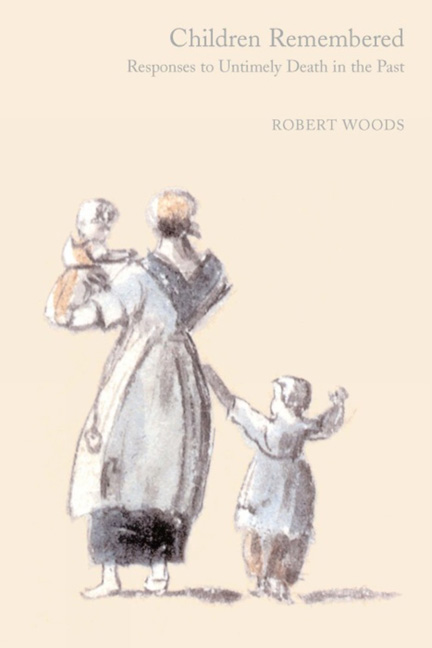Book contents
- Frontmatter
- Dedication
- Contents
- List of Tables
- List of Figures
- List of Illustrations
- 1 Introduction: ‘the lines of life’
- 2 Après la mort des enfants
- 3 Mortality, Childcare and Mourning
- 4 Children in Pictures and Monuments
- 5 Emotions and Literature
- 6 Poems, Mainly of Child Loss
- 7 The Vocabulary of Grief
- 8 Parallel Histories: Experience and Expression
- Acknowledgements
- Notes on the Sixty-Nine Poems
- Notes
- Select Bibliography
- Index
1 - Introduction: ‘the lines of life’
- Frontmatter
- Dedication
- Contents
- List of Tables
- List of Figures
- List of Illustrations
- 1 Introduction: ‘the lines of life’
- 2 Après la mort des enfants
- 3 Mortality, Childcare and Mourning
- 4 Children in Pictures and Monuments
- 5 Emotions and Literature
- 6 Poems, Mainly of Child Loss
- 7 The Vocabulary of Grief
- 8 Parallel Histories: Experience and Expression
- Acknowledgements
- Notes on the Sixty-Nine Poems
- Notes
- Select Bibliography
- Index
Summary
How did adults, and especially parents, respond to the early deaths of children? Was the bond ofemotional attachment between parents and off spring as close in the past as it is said to be today? How was that attachment expressed? What influence did the demographic environment in which people lived, especially the risk of dying, have on attitudes and behaviour when survival chances were largely beyond human control? How, for how long and with what intensity were dead children mourned? Were children's short lives commemorated, and was their loss grieved over? These are important and intriguing questions, which have attracted considerable scholarly attention over the years. They still challenge because they have not been answered in ways that can be accepted as entirely satisfactory. There are three reasons for this: our expectations are poorly articulated, and theory lets us down; the empirical evidence that might be used to help clarify matters is fragmentary and open to a variety of interpretations; and the questions are broad, and demand multi-disciplinary approaches in an age that admires specialisation and focused enquiry. Answering these questions might have wider implications for social policy, and certainly for political ideology. For example, there has been a long-running debate, principally among psychologists, about whether human emotions are physiologically determined or socially constructed. Similarly, family historians have characterised parents as either ‘loving’ or ‘indifferent’ in the past. Thus, parents are by nature always loving and caring as part of an evolutionary strategy or parents are selectively indifferent according to the social, political and cultural circumstances that condition their behaviour. Of course, neither is likely to be the full story.
This short introductory chapter merely sets the scene. It raises the questions, makes the case for their importance, suggests how they might be resolved, and sketches the approach that will be adopted in the chapters that follow. It also introduces the principal characters and some of their conflicting opinions on appropriate lines to take. The story is part of demographic history. It tells of the way in which children were regarded by adults and, in particular, the ways in which parents responded to their untimely deaths.
- Type
- Chapter
- Information
- Children RememberedResponses to Untimely Death in the Past, pp. 1 - 6Publisher: Liverpool University PressPrint publication year: 2006



